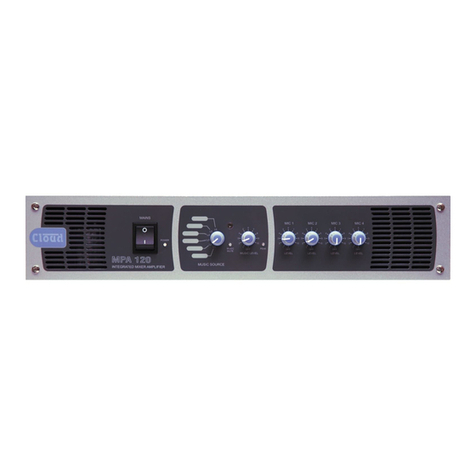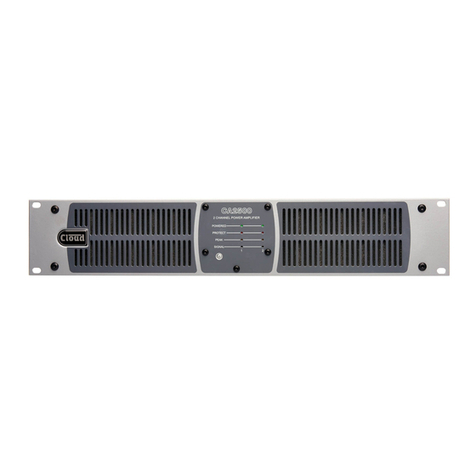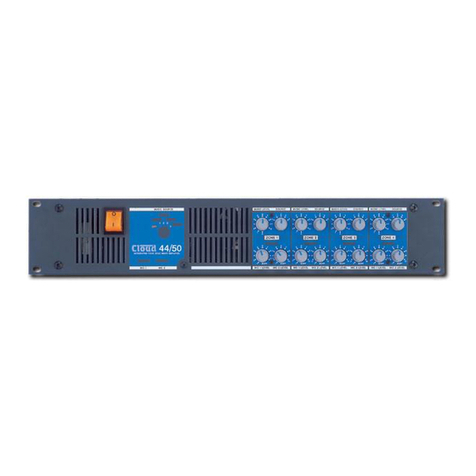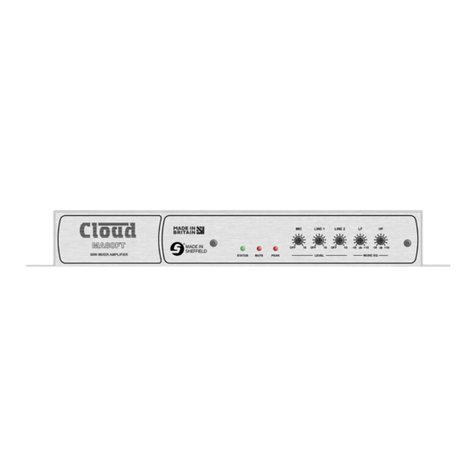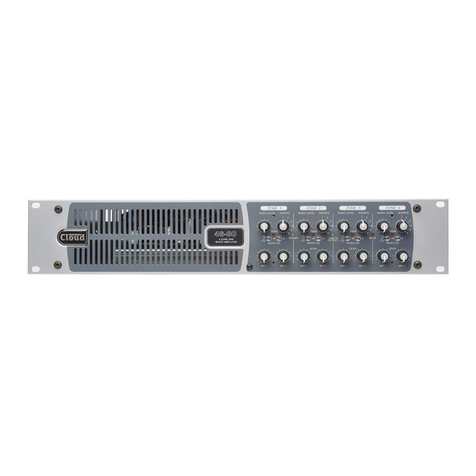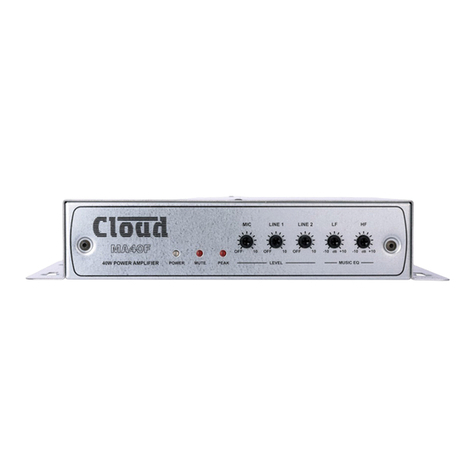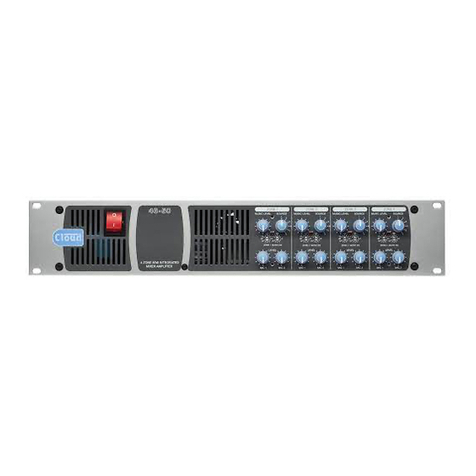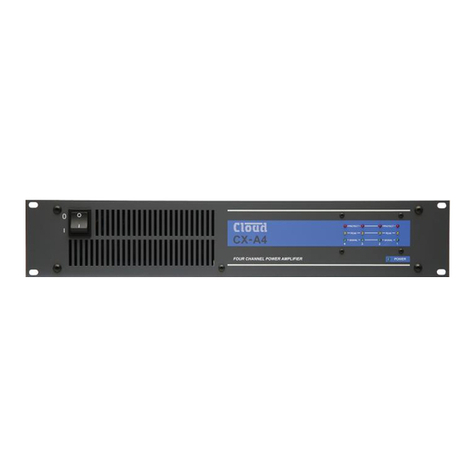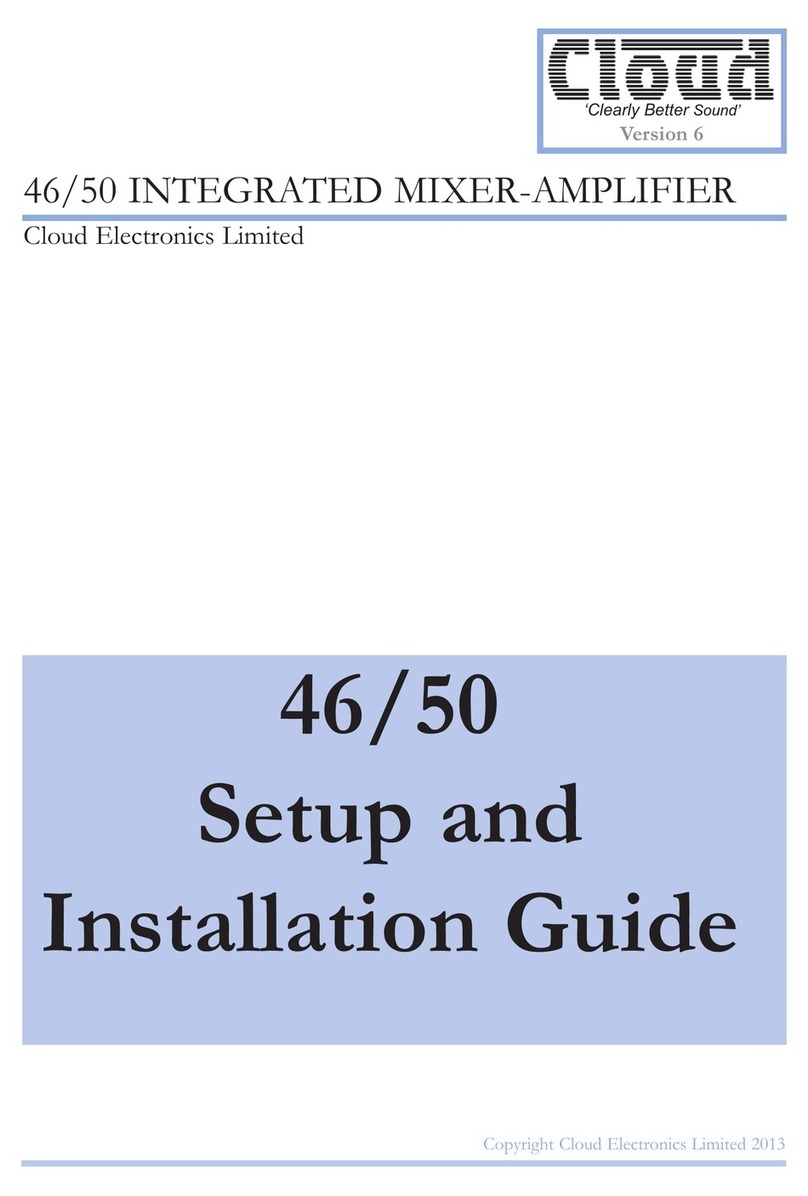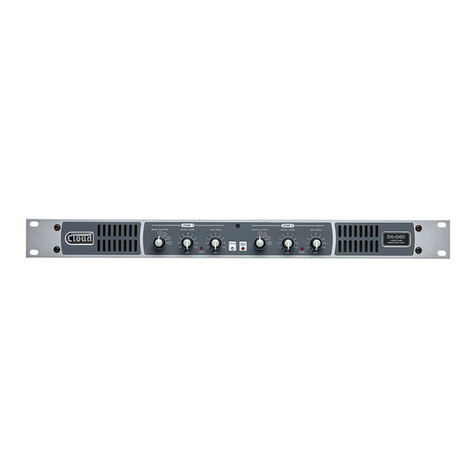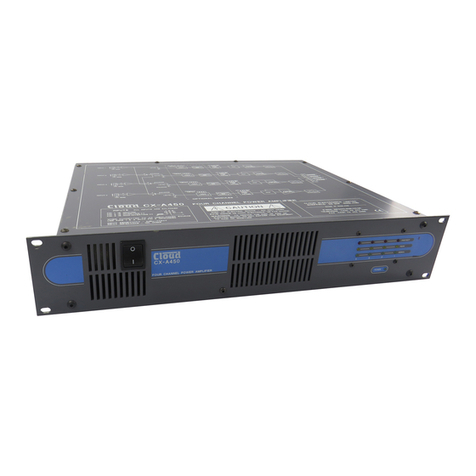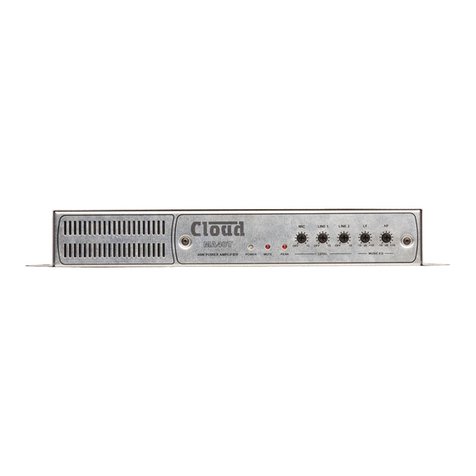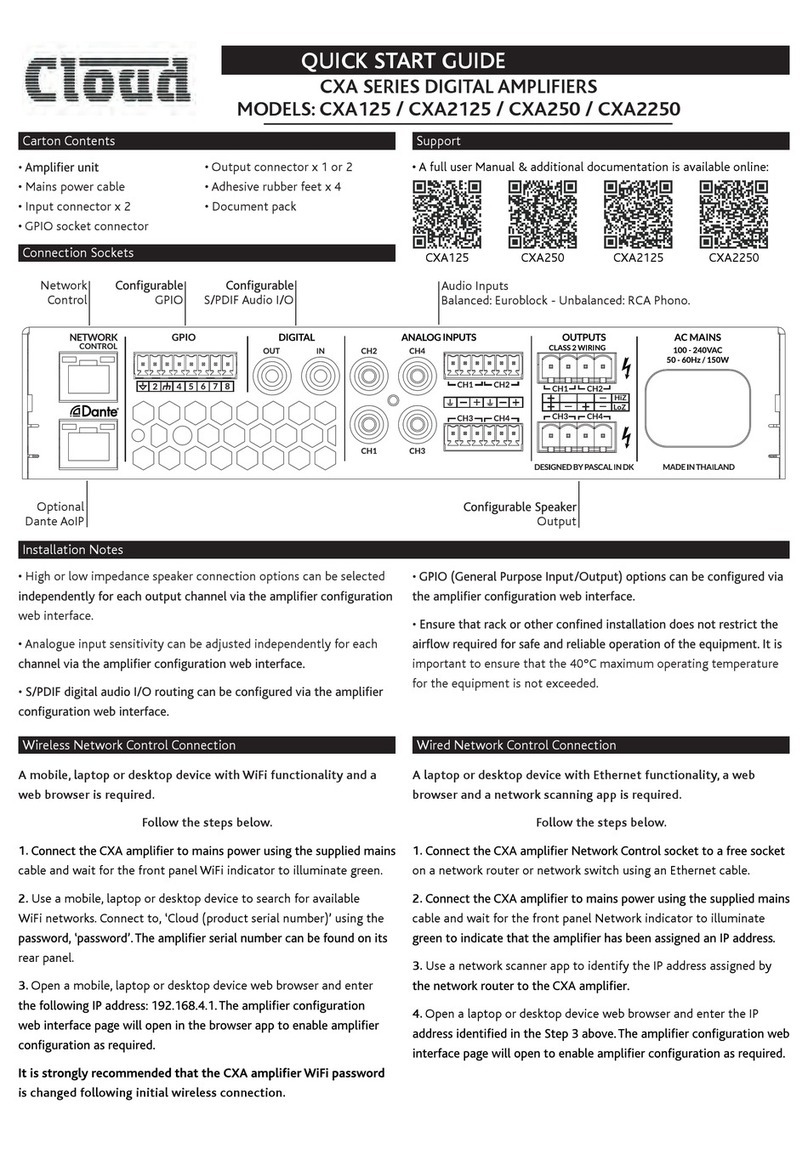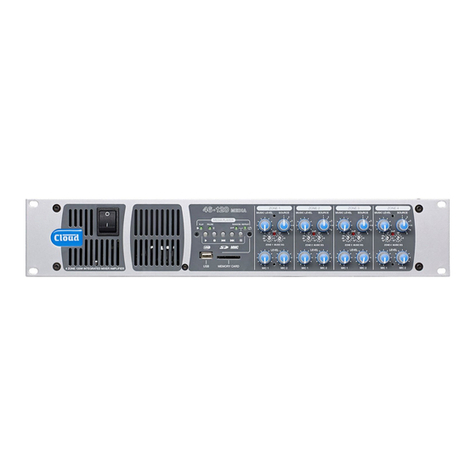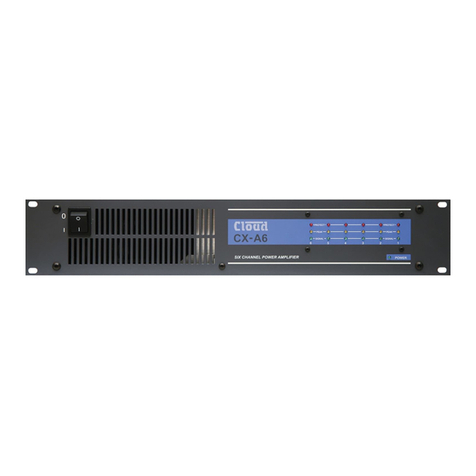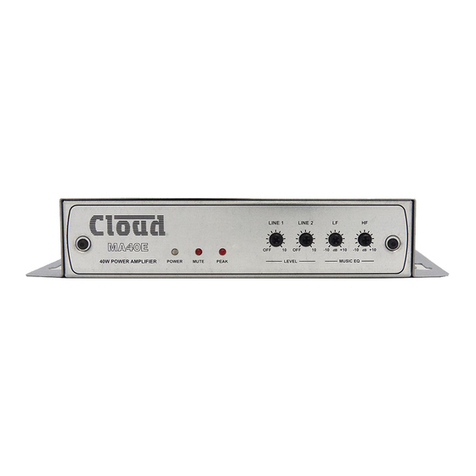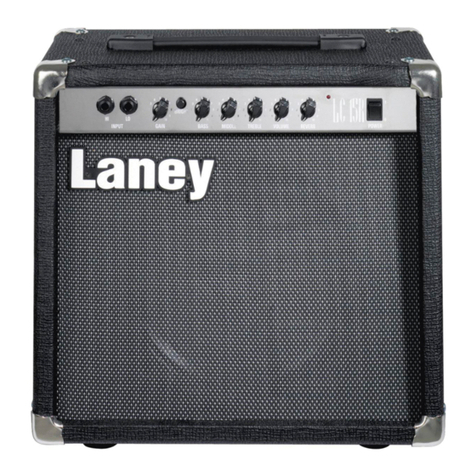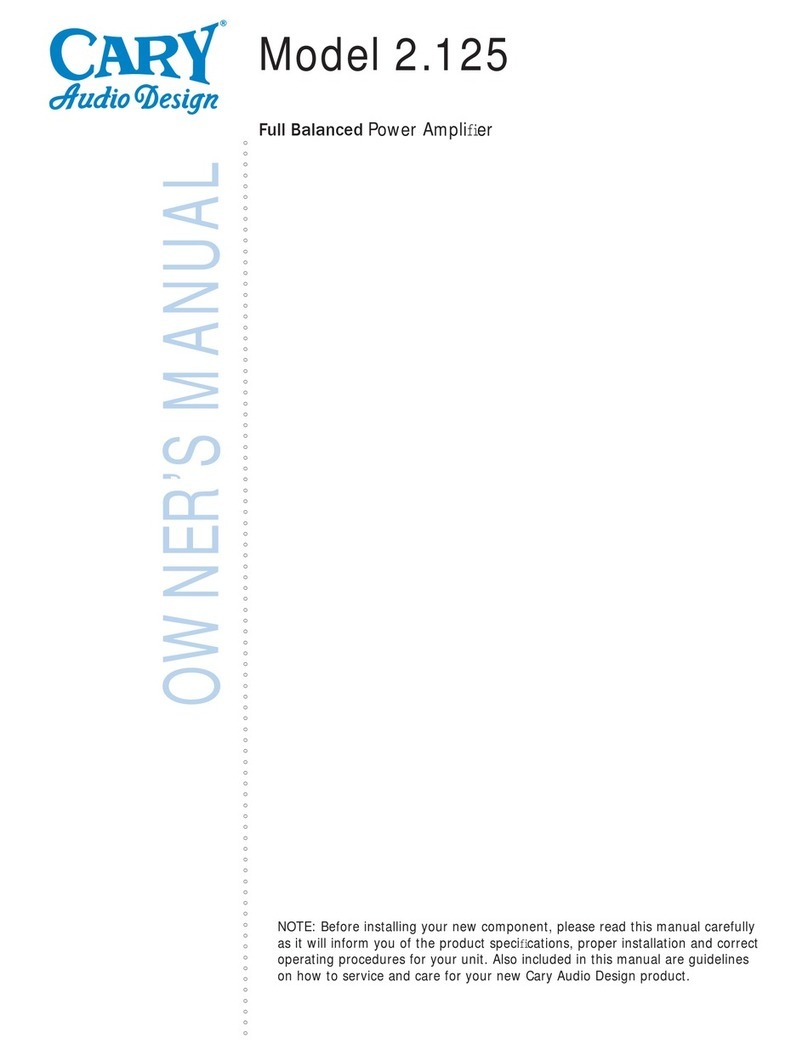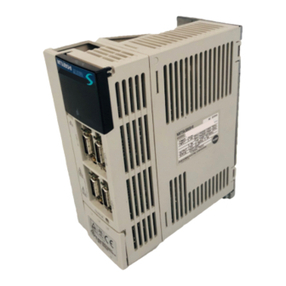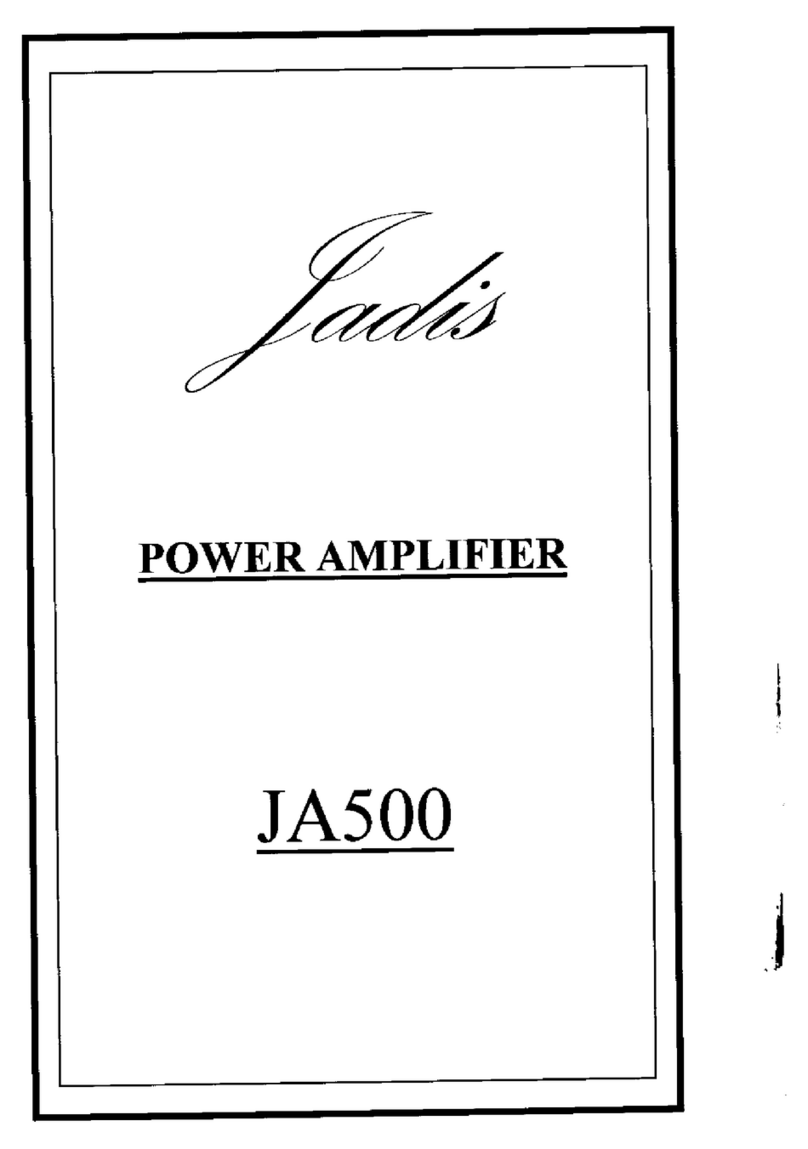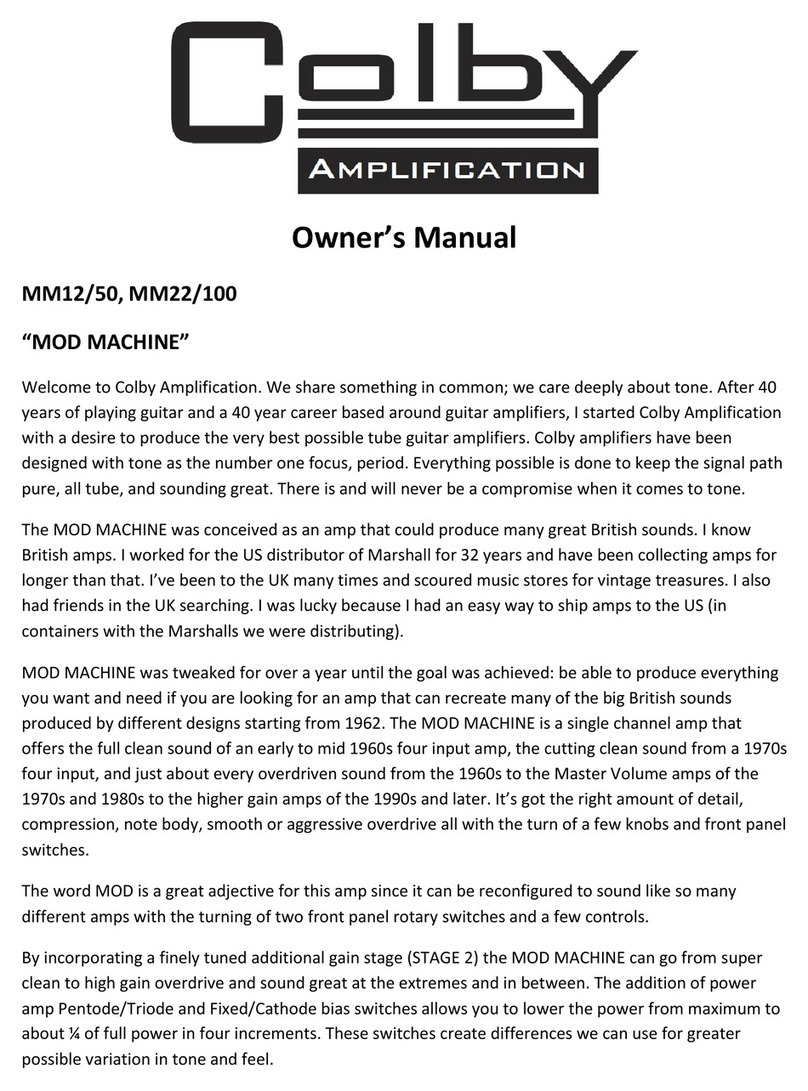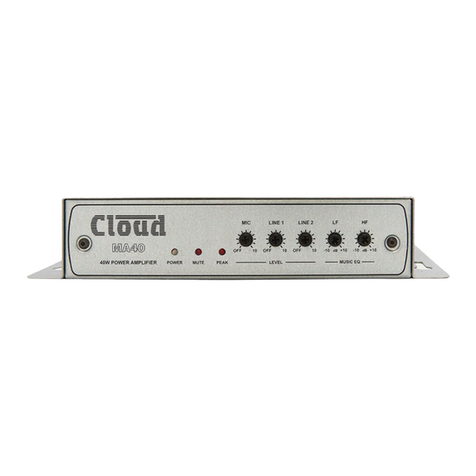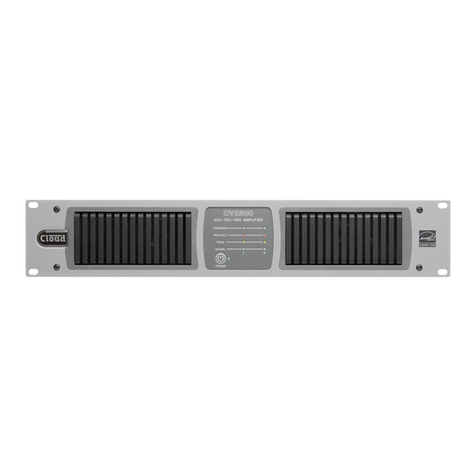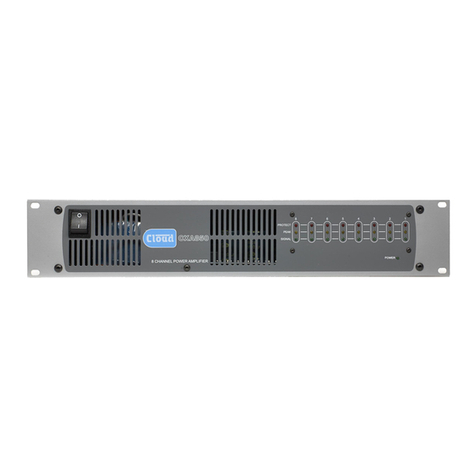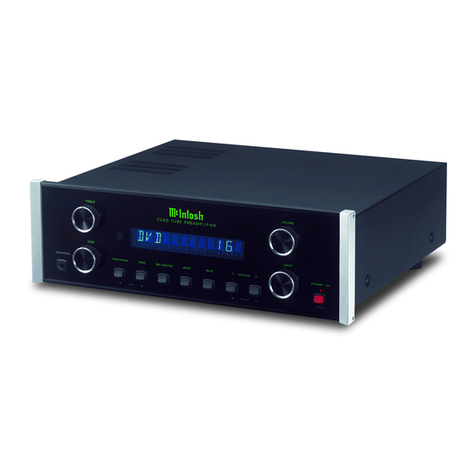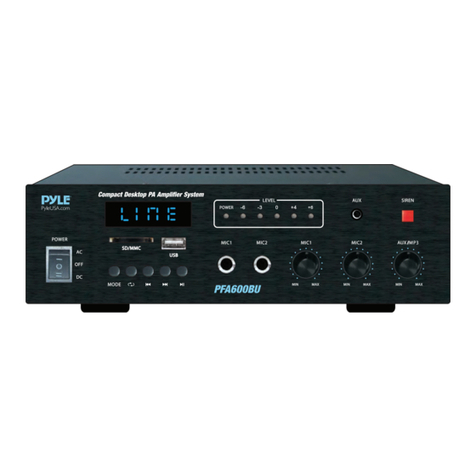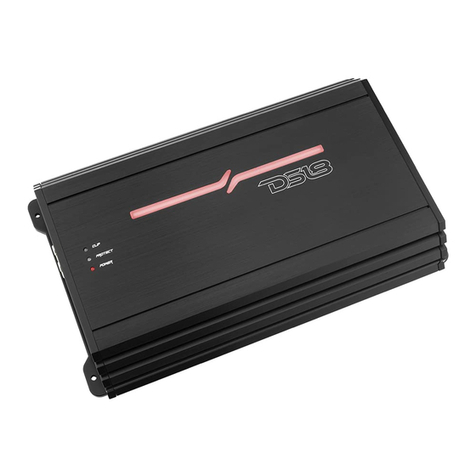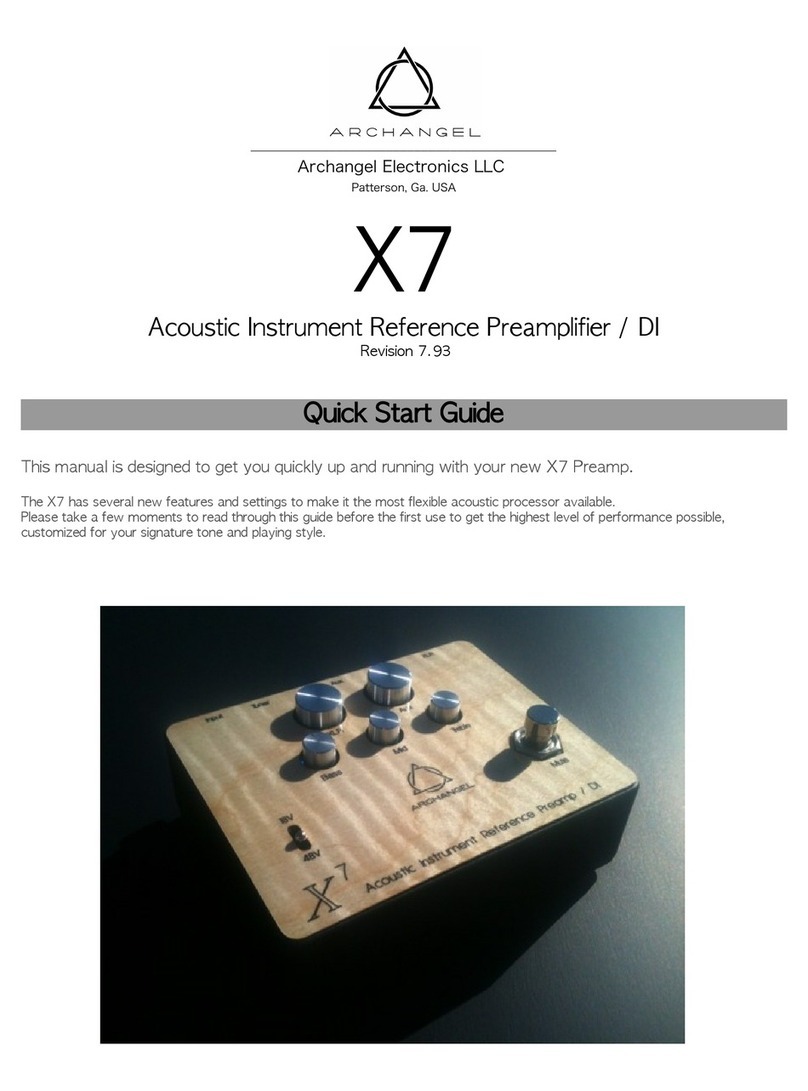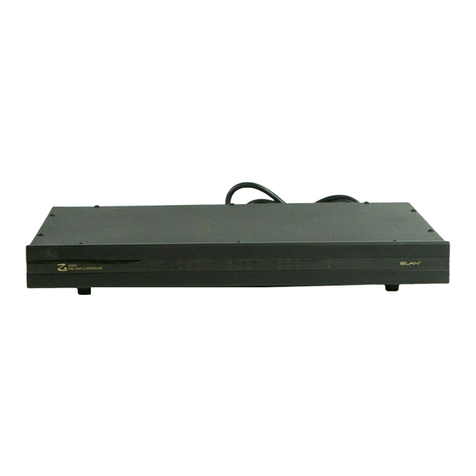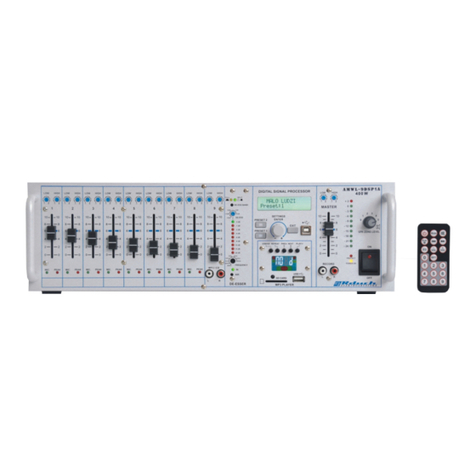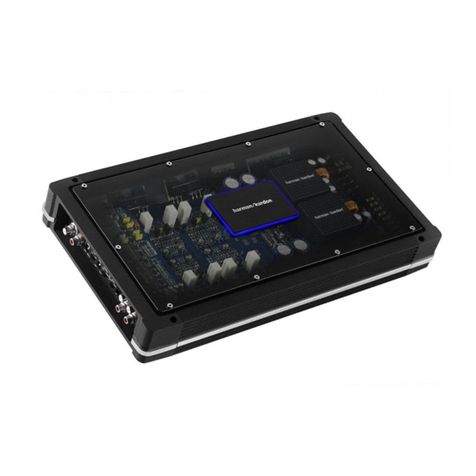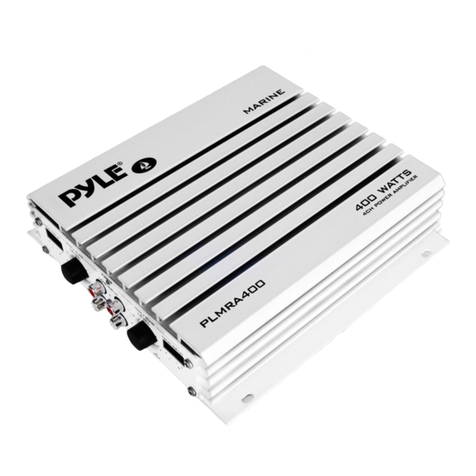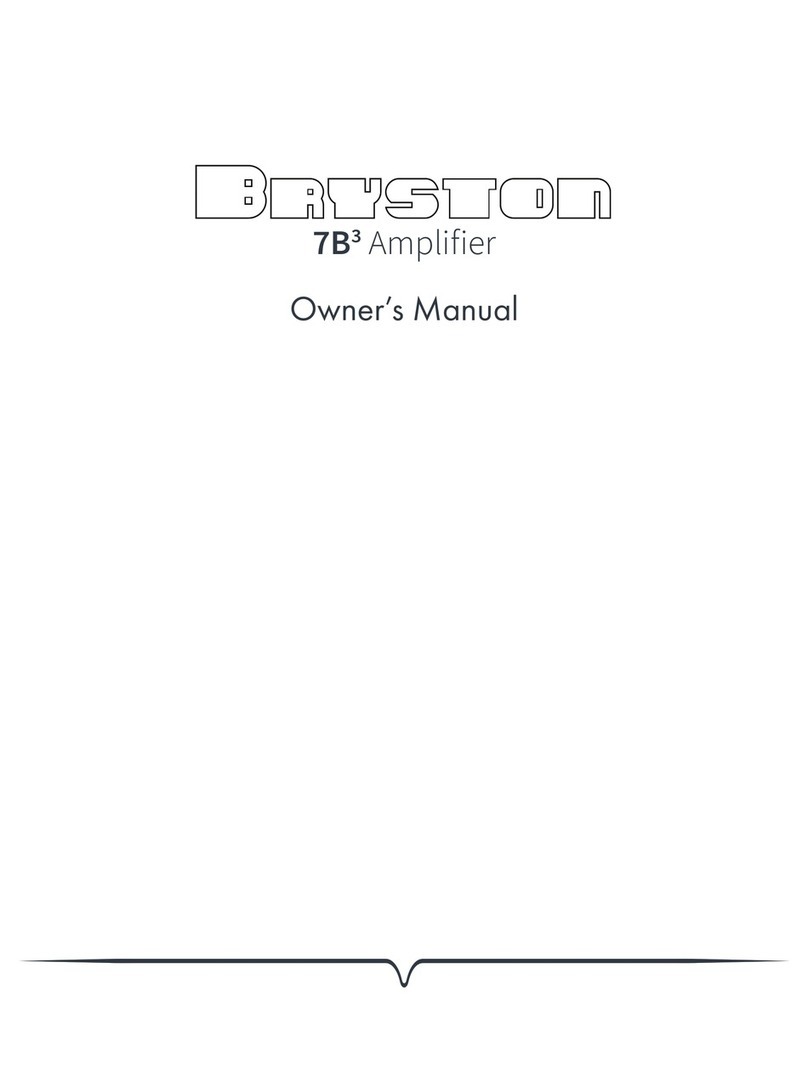General Notes
Multi-zone Applications
Where the sound system specication calls for separate
control in several zones, MPA Series ampliers can be used
in multiples.
Signal sources can be connected to several inputs as
required, but care must be taken to ensure the output stage
of the signal source is capable of driving the resulting lower
input impedance.
The impedance of the line inputs (music inputs) is 47k ohms
and it is reasonable to assume that most op-amp based
signal sources are able to drive a 10k ohm load, allowing up
to ve ampliers to be paralleled.
The input impedance of the mic inputs is 2.4k ohms, making
them suitable for microphones with a nominal impedance
of 600 ohms or less. A single 600 ohm microphone
could therefore typically be connected to four paralleled
mic inputs. If this guideline gure cannot be adhered to,
the use of suitable mic or line distribution ampliers is
recommended.
To avoid any problems associated with differences in
mains supply earthing, we recommend that all MPA Series
ampliers used in a multi-zone application should be co-
located and connected to a common mains supply.
Note that when using multiple MPA Series ampliers in a
19” rack, suitable ventilation arrangements must be made to
ensure that lower ampliers do not cause those above to
overheat (see Ventilation for further information).
EMC Considerations
MPA Series ampliers fully conform to the relevant
electromagnetic compatibility (EMC) standards and are
technically well behaved.You should experience no problems
interfacing units to other items of equipment and under
normal circumstances, no special precautions need to be
taken.
If the unit is to be used in close proximity to potential
sources of HF disturbance such as high power
communication transmitters, radar stations and the like, it is
suggested that input signal leads be kept as short as possible.
Always use balanced interconnections wherever possible. If
the MPA Series amplier is mounted in a 19” rack, do not
locate the unit in close proximity to a powerful amplier of
any kind, which may radiate a strong magnetic eld from the
power transformer.
Earthing
When several mains powered units are connected together
via their signal cables, there is a risk of one or more earth
loops which may cause an audible hum on the system even
with the gain controls set to minimum.
The 0 V rail of an MPA Series amplier is directly coupled to
the chassis ground. No interconnection problems should be
encountered, but if there is any hum or other extraneous
noise when source equipment is connected, the situation can
generally be remedied by observing the following guidelines:
Always connect sources using balanced connections•
wherever possible, with the cable screen only connected
at the receiving end (amplier input).
Use audio isolating transformers (readily available from•
trade suppliers) at the inputs if necessary.These will
ensure that the amplier is electrically isolated from the
source equipment.
The signal source units should be located as close as•
possible to the ampliers and the metal housing of
the various units should not be electrically connected
together through the equipment rack. If this is a
problem, rack isolating kits are available from specialist
hardware suppliers. If the problem persists, try to
connect all interconnected units, including power
ampliers to a common power source to ensure a
common ground is provided.
Ventilation
MPA Series ampliers are force cooled by a thermostatically-
controlled fan.The fan is operative at all times, remaining
at low speed at internal temperatures below 50 ºC, then
increasing in speed above this temperature to a maximum
speed at 70 ºC.
Always allow adequate space around the amplier(s) to
allow a free ow of air through the unit(s). In 19” rack
applications we recommend leaving 1U of rack space above
and below each unit. Plain 1U blank panels, not slotted
ventilation panels should be used, as the latter reduce the
effect of forced-air cooling.
The direction of airow in MPA Series ampliers is from
front-to-rear; it is recommended not to mix the ampliers
with other equipment employing forced-air cooling which
acts in the opposite direction within the same rack.
In free standing applications we recommend tting the
feet supplied and placing the unit on a at surface and
leaving the ventilation slots on top of the unit free from any
obstructions.
















